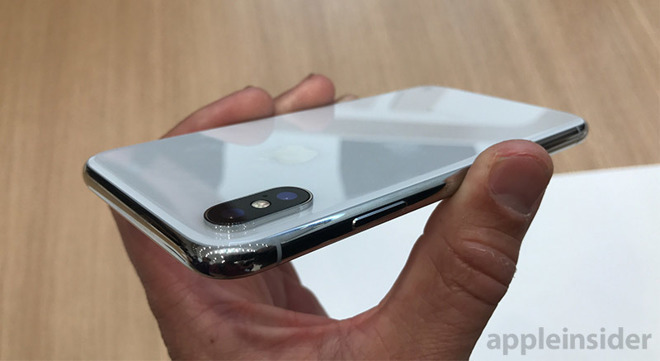The next generation of iPhones will start production in August, according to a supply chain report from investment firm Rosenblatt Securities, with Apple expected to offer an LCD version of the smartphone at around $200 below the cost of the OLED models shipping at the same time.

The note written by Rosenblatt analyst Jun Zhang obtained by AppleInsider anticipates three new iPhone models will be launched later this year. The lineup will consist of two OLED versions, with 5.8-inch and 6.5-inch displays, alongside a 6.1-inch LCD version.
It is estimated as many as 60 million LCD models could be produced, more than the combined 50 million units expected for the OLED versions, consisting of 28 million 5.8-inch and 22 million 6.5-inch models.
While slightly different in quantity, this seems to match the views of other analysts for what Apple will be shipping this fall.
"We believe the LCD model is being positioned to be priced more aggressively - in the $799 range" the report states, suggesting it would help push iPhone 6 and iPhone 6s users to upgrade to the "iPhone 8S," apparently also known as the "Jaguar" model.
KGI analyst Ming-Chi Kuo recently suggested an even cheaper version of the 6.1-inch LCD model could be offered for between $550 and $650, while a $700 to $800 variant could include dual SIM slots without eSIM support.
The $200 price cut compared to the OLED models is down to an array of cost-cutting measures, including a $50 saving in using LCD instead of OLED, and switching out the steel frame for another material to save $20. Material cost reduction around the radios, a single camera on the rear, the removal of force touch, and other reductions are suggested.
While using LCD, Rosenblatt suggests Apple will still retain the notch at the top, but could also introduce a small bezel at the bottom. It is unclear why this may be included, but adding a chin would help simplify production by working within the limitations of LCD screen technology.
The 5.8-inch OLED "Porsche" model apparently won't have many "significant design changes" compared to the existing iPhone X.
The larger 6.5-inch OLED "Rolls-Royce" model will be positioned at a far higher price, and will have some slightly unusual features. The firm believes it will support the "iPen," which could be a reference to the Apple Pencil or a similar device, though the accessory will not be included in the box with the iPhone.
The bigger model is also thought by Rosenblatt to include a dual-SIM card design, which could help it appeal to regional markets like China where dual SIM card usage is more common.
The new iPhones may benefit from improvements from 3D sensing, it is suggested, with second-generation 3D sensing modules consuming less battery while enabling new application features. Lumentum is believed to be the main supplier of the higher-efficiency VCSEL modules that will be used in the new iPhones.
Another feature that may make an appearance is increased water resistance. The iPhone X, iPhone 8, and iPhone 8 Plus are IP67 rated, allowing them to endure splashes and immersion of up to 1 meter (3 feet 3 inches) for up to 30 minutes, but Apple is apparently working to push this to a depth of 10 meters.


